Life has a funny way of throwing unexpected curveballs, and for the past three weeks, my world has been a series of careful hobbles, slow crawls, and cautious scooting. It all began with an unfortunate fall, followed by a particularly enthusiastic front-jump-kick during Tae Kwon Do class that, regrettably, ended in a spectacular front-jump-FAIL. The result? A journey I hadn’t anticipated: urgent knee surgery to replace my ACL and repair a torn meniscus in my right knee. It was a significant setback, transforming my active lifestyle into one of forced stillness and meticulous recovery.
Initially, I managed to delay the surgery for a full two months. This period was filled with essential commitments, including extensive travel and the incredible responsibility of hosting the annual Dumpling Festival. I’m thrilled to report that this year’s festival was a resounding success, raising an impressive $46,000 for the Food Bank for NYC, surpassing our previous year’s record of $44K! Woohoo! Looking back, it’s almost unbelievable that for those two months, the stability of my leg depended on what felt like a mere half-inch of ligament. The thought still sends a shiver down my spine – truly a scary predicament!
When the day finally arrived, the surgery itself went remarkably smoothly. I must admit, I’m quite a lightweight when it comes to medication. The pre-anesthesia relaxing pill worked its magic almost immediately, knocking me out before I even reached the operating room. My next conscious memory was a blur of nurses in the recovery area, diligently attending to other patients. It was a testament to the skilled medical team that everything proceeded without a hitch, allowing me to focus entirely on the challenging path of recovery ahead.
Now, my daily companion is a full leg brace, and I navigate the world with the aid of crutches, a regimen I’ll maintain for six weeks. The demands of my schedule meant that even with these mobility aids, life couldn’t entirely grind to a halt. Just last week, I traveled to Nashville to host the Food Blog Forum, making my appearances in full leg gear. As you might imagine, I’m not exactly graceful on crutches – a confession that often brings a wry smile, considering my uncoordination is precisely what landed me in this situation in the first place! At home, I’ve found it easier to move around barefoot, even venturing outside when necessary, which, as I soon discovered, comes with its own unique set of challenges.
The main problem with going barefoot outside, particularly on our property, lies between a seemingly innocuous stretch of land: from HERE to THERE, precisely where I need to trek daily to feed our hungry chicks. This seemingly short journey is fraught with peril, a tiny, yet formidable, obstacle course.


In this deceptively ordinary stretch of earth reside approximately 500,000 fire ants. Yes, you read that right – half a million of those notorious little critters that swarm your body, injecting their fiery venom, prompting that involuntary, frantic “OW! OW! OUCH!” dance, followed by days of relentless itching. The mere thought of encountering them while navigating on crutches with a recovering knee was enough to make me hesitate.
However, the call of duty for our feathered friends and parched garden plants was undeniable. Scott was taking the boys to school, leaving me as the sole caretaker. The chicks were surely starving, and the garden plants were visibly sagging from extreme thirst. Okay, perhaps I’m a touch dramatic, but I needed to amp up the scenario to bolster my bravery (or perhaps mask my stupidity?) for hobbling into that ant-infested field, barefoot and on crutches. Oh, and I almost forgot to mention a crucial detail: I was also on some rather niiiiiiicccceeee pain medication. This, I reasoned, would surely numb any potential ant bites, making the venture justifiable, if not entirely wise. Sometimes, the need to care for living things overrides common sense, especially when compounded by a bit of medication-induced bravado.
Nurturing Our Garden: Experiments in Sustainable Growth
Speaking of garden plants, let me share an exciting development. Scott, ever the industrious one, built six raised garden beds for us just last month. These aren’t just any garden beds; they’re the foundation of our ambitious new gardening experiments, focusing on highly efficient and sustainable methods. We’re currently diving deep into the practice of lasagna gardening, also known as sheet mulching or no-dig gardening. This innovative approach involves layering organic materials directly in the garden bed, creating a rich, fertile environment without the need for traditional tilling. The layers typically consist of cardboard at the bottom to suppress weeds, followed by straw for carbon and moisture retention, grass clippings for nitrogen, manure for essential nutrients, and finally, a top layer of soil for planting. This method allows the straw and compost to slowly break down over time, providing an entire season of incredibly rich, nutrient-dense soil, effectively eliminating the need for digging, excessive mulching, constant fertilizing, or laborious weeding. It’s a game-changer, especially for someone recovering from knee surgery, as it significantly reduces physical strain while promoting soil health.

To further maximize our gardening efforts and ensure an abundant harvest, we’ve combined the lasagna gardening method with the principles of Square Foot Gardening. For anyone serious about efficient space utilization, I highly recommend this book on the subject. This technique involves dividing each raised bed into precise one-square-foot sections. The beauty of it lies in its flexibility: depending on the plant type, each section can accommodate anywhere from 1 to 16 seedlings. For instance, compact vegetables like carrots, onions, beets, and radishes require minimal space, allowing us to plant up to 16 individual plants within a single square foot. Larger plants such as lettuce and corn can be planted four to a square, while space-hogs like tomatoes and other expansive plants are allocated one square foot each. This meticulous planning not only makes the most of every inch of garden space but also creates a dense canopy of foliage, effectively shading out weeds and minimizing their growth.
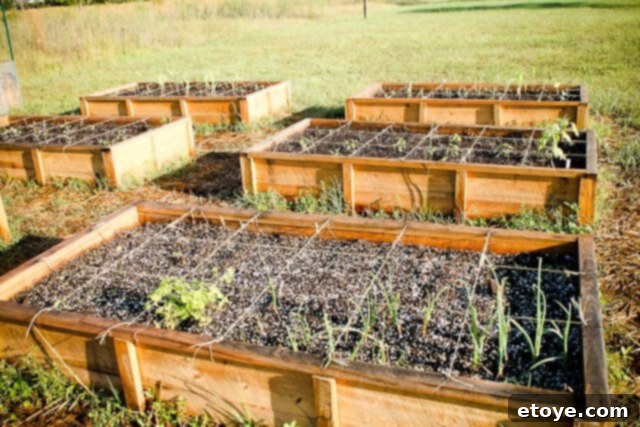
The synergy of lasagna gardening and square foot gardening promises a remarkable increase in our yield. We anticipate a harvest up to 16 times greater compared to traditional row gardening within the same footprint. The vegetables will grow so lush and full that there will simply be no room, or even sunlight, for weeds to thrive underneath. This season, I’ll be meticulously tracking and reporting back on our progress, sharing the successes and challenges we encounter in this exciting experiment in sustainable, high-yield gardening. It’s not just about growing food; it’s about learning, adapting, and finding joy in the cultivation process, especially during a period of personal recovery.
In a resourceful twist, I’ve discovered yet another practical use for my trusty mason jars. They’re currently serving a vital role in the garden, providing essential protection for our very delicate young seedlings. These fragile “babies” are particularly vulnerable to the harsh elements of the outdoors.

The jars act as miniature greenhouses, shielding the tender plants from strong winds and torrential rain, both of which can be devastating to newly sprouted life. Furthermore, they expertly trap moisture, creating a humid microclimate that is ideal for the seedlings’ early development. This added humidity helps to prevent dehydration and promotes robust growth during their most vulnerable stage. Once the seedlings mature and develop a bit more strength and resilience, I’ll carefully remove the jars, allowing them to fully embrace the open air and sunlight. It’s a simple, yet highly effective, method born out of necessity and a desire to give our garden the best possible start.
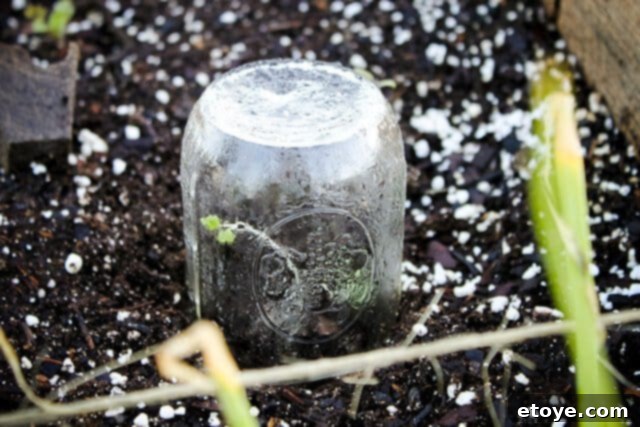
Meanwhile, our Earthbox garden continues to amaze with its incredibly rapid growth! It feels like just yesterday I was marveling at tiny sprouts, and now, things are practically exploding with life. I snapped this photo just a few days ago, but even since then, the cucumber plants have practically doubled in size! The speed at which these plants are maturing is truly astonishing. We’re already harvesting delicious Japanese cucumbers after just a month – they were itty bitty seedlings just a month ago, which speaks volumes about the efficiency of the Earthbox system and the quality of our growing conditions. There’s immense satisfaction in picking fresh, homegrown vegetables, especially when they grow so effortlessly.

The zucchini plants are now proudly displaying their vibrant yellow flowers, a sure sign that bountiful harvests are just around the corner. Our edamame plants are also popping up with healthy pods, promising a delicious snack in the near future. It’s a joy to watch this garden flourish, providing a steady stream of fresh, organic produce right at our fingertips.
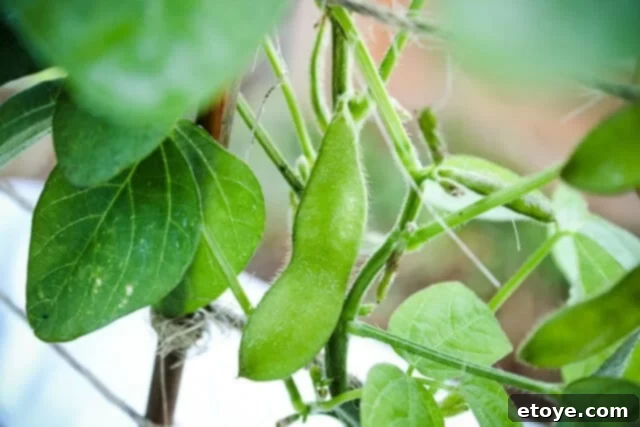
Our bell peppers are diligently growing, gradually swelling with the promise of sweet and crunchy additions to our meals. We’ve been consistently harvesting tender lettuce leaves for our salads, enjoying the crispness and fresh flavor that only homegrown greens can offer. Encouraged by the success of other plants, I recently planted even more pea plants, hoping to boost our supply of these sweet legumes. However, the pea plants seem to be facing an ongoing struggle, a persistent challenge that has puzzled me for some time. Every time a new set of vibrant green leaves appears, almost without fail, they are chomped down by the very next day. At first, I suspected caterpillars, given the tell-tale bite marks and the commonality of these garden pests.

I examined the leaves closely, searching for any tell-tale signs of the tiny green culprits. Yet, despite my diligent inspections, I couldn’t find any caterpillars. The mystery continued, as did the destruction of my precious pea plants. The thought of losing an entire crop to an unseen enemy was incredibly frustrating, adding another layer of challenge to my already eventful recovery period. It’s a constant battle in the garden, a delicate balance between cultivation and protection.
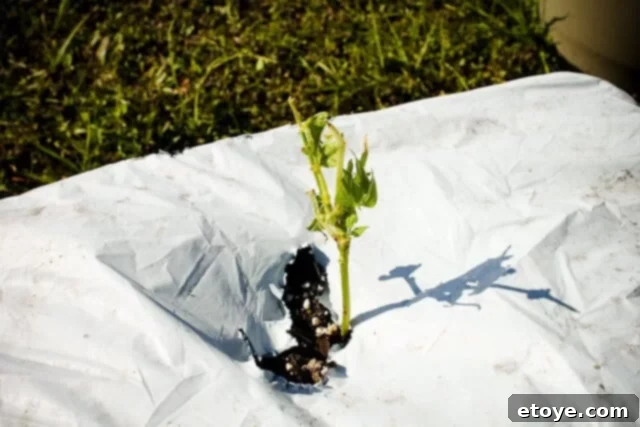
Then, the other day, the mystery was finally solved, though the revelation was met with a mix of disbelief and growing horror. I caught the culprit red-handed – or rather, red-beaked! It was a bird, brazenly pecking at and devouring the leaves of not just my peas, but also my cucumber plants and lettuce! My initial assumption of caterpillars was completely off; it was our feathered friends, enjoying an unexpected buffet. The audacity! My internal monologue immediately shifted from “poor plants” to “naughty birds!”
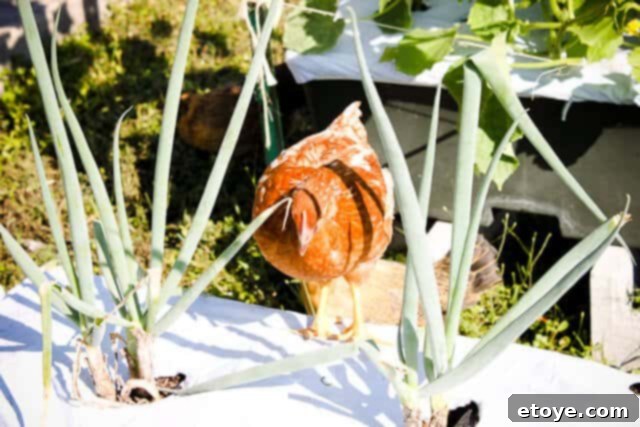
To my absolute horror, as if mocking my attempts at gardening, she then proceeded to call her friends over! Suddenly, what started as one lone feathered intruder quickly turned into a small feathered gang, all descending upon my carefully cultivated plants. It was a disheartening sight for any gardener.
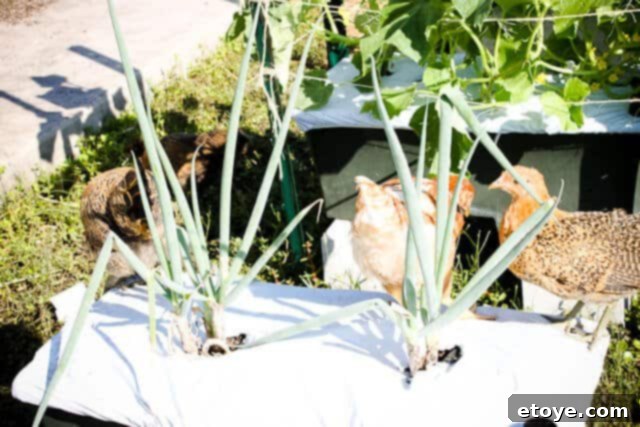
AAAAACCCCKKKKKK!!!!!! Naughty birds! You’re supposed to be eating the BUGS off the plants, providing a natural form of pest control, not devouring the plants themselves! This sudden turn of events highlights the ongoing battle all gardeners face against wildlife, an unexpected challenge in my otherwise thriving green sanctuary. It seems my garden experiments extend beyond cultivation to include sophisticated pest deterrence strategies now!

A Culinary Interlude: Welcoming John Gregory Smith
During my period of recovery, the universe, in its own wonderful way, sent a delightful distraction and a beacon of culinary joy: my dear friend John Gregory Smith, all the way from London. Allow me to introduce him properly to the world. John is an absolute maestro of spices, a true culinary artist whose passion for flavor is infectious. You simply must watch his pilot to fully grasp his vibrant personality, his undeniable charm, and his immense talent. He embodies enthusiasm and brings an incredible energy to everything he does. John has recently launched his highly anticipated first book, Mighty Spice, a truly gorgeously photographed testament to his expertise in global flavors. I had the pleasure of assisting with setting up a television spot for him in Tampa, a task I undertook with great enthusiasm. Truth be told, this was primarily my rather sneaky way of ensuring he would stay with us for a few days, providing much-needed companionship and, more importantly, cooking up a storm for me while I was healing after surgery. A little bit of mischievous planning, but entirely worth it for the incredible food and company!

During his visit, we couldn’t resist initiating John into the joys (and sometimes comical struggles) of farm life. We made him play farmer for a bit, and it was quite an experience for him – his first time ever holding a live chicken! The moment was captured perfectly, full of cautious curiosity on his part. Of course, the playful banter ensued, with me quickly reminding him, “No, John, you can’t cook her!” It was a lighthearted moment that perfectly showcased the blend of urban sophistication and rural charm that defined his visit.
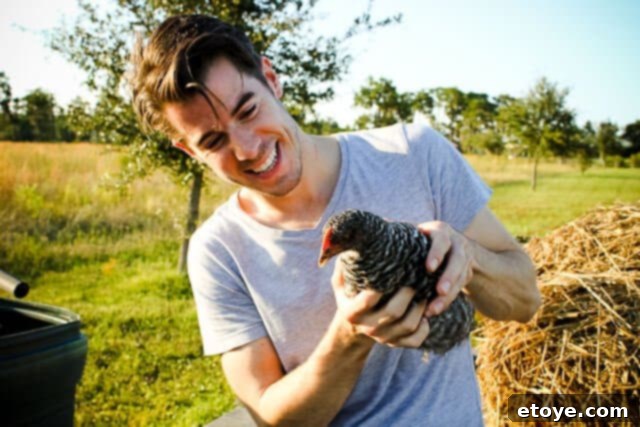
By the way, the magnificent hen John was holding is our very own Oreo. Isn’t she absolutely HUGE!? She’s grown into such a substantial and beautiful bird, a testament to her healthy life on our small farm. Her presence adds so much character to our backyard ecosystem.

It’s incredible to look back at her baby pictures from just two months ago. She was just a tiny, fluffy chick then, and seeing her transformation into such a robust hen highlights how quickly they grow and how much life happens in such a short span of time.
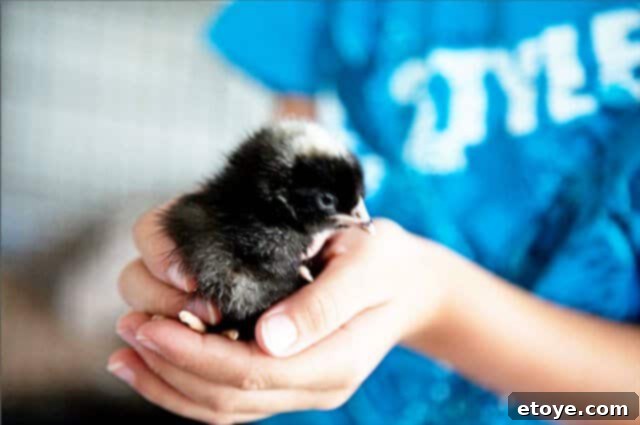
And then there’s Fireflapper, arguably the most charming and friendly of all our chickens. She’s developed a wonderful trust with us, so much so that she’ll confidently eat treats – usually tasty bugs – right out of our hands! Her gentle nature and willingness to interact make her a true favorite among our flock. These delightful interactions with our chickens, despite my recovery, provide endless moments of joy and connection to the simple rhythms of nature. They are a constant reminder of the vibrant life that thrives around us, even when personal challenges arise.

